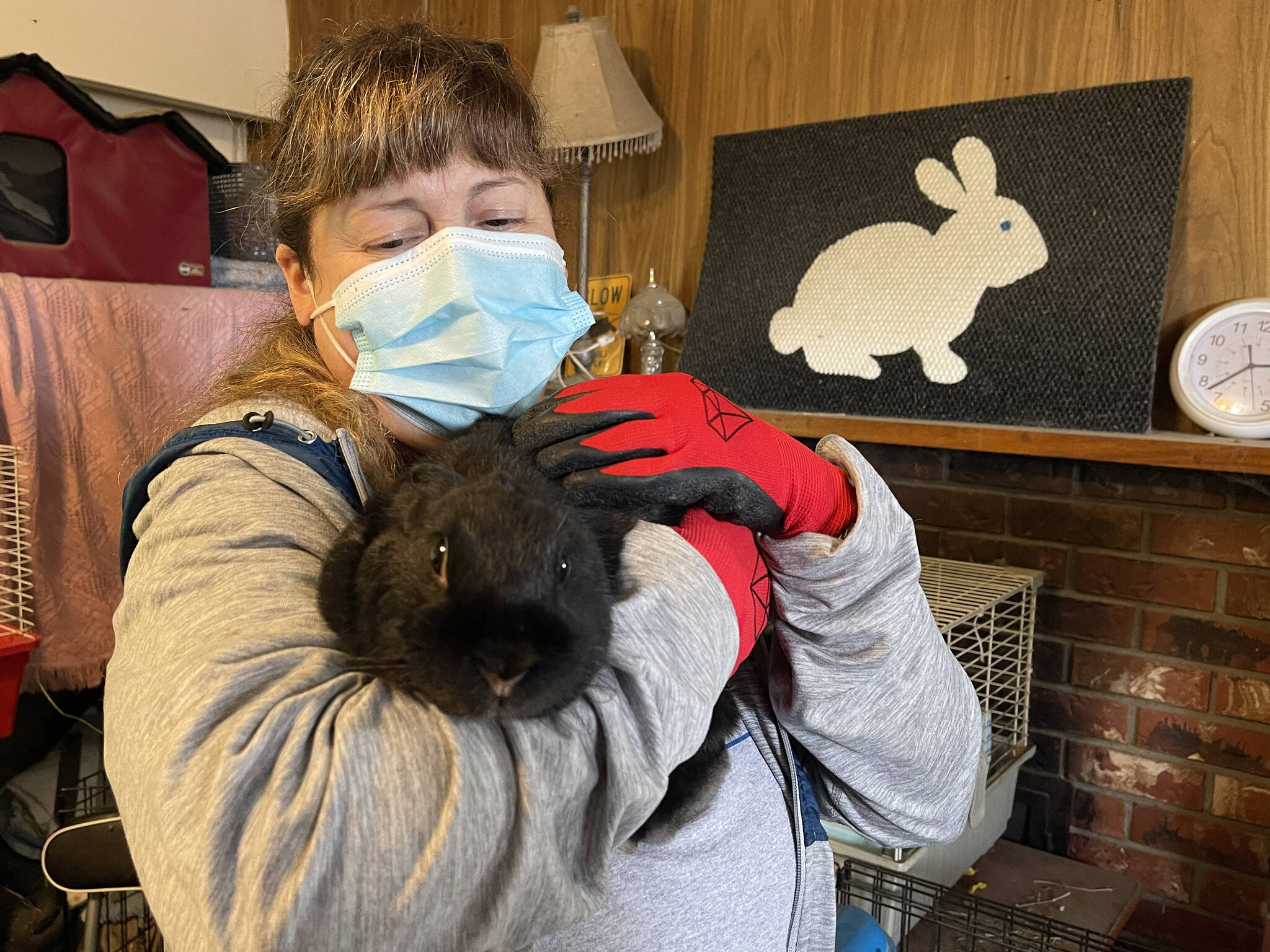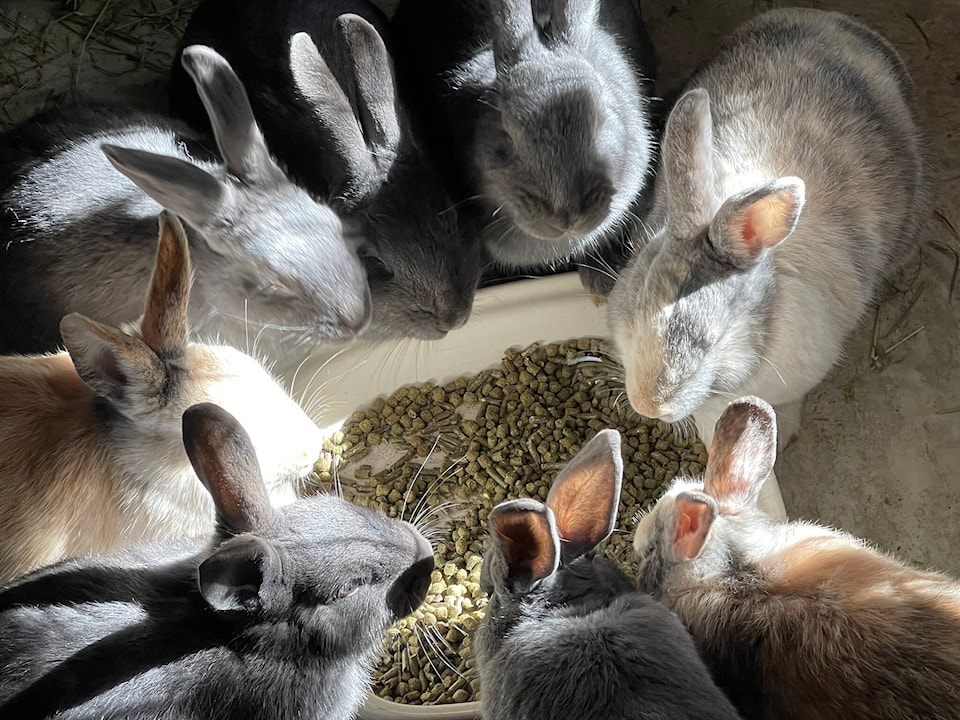About a year and a half ago, my mother rescued a rabbit. Pipkinn (because he was cute enough that he needed a name) was one of dozens of rabbits that have infested the grounds around her Richmond condo, and she saw him on her daily pandemic walks in the neighbourhood.
One day though, Pipkinn appeared with only one ear, the other one looking like it had been pulled off at his scalp. He was limping, favouring a front paw. She watched him for a couple of weeks, and when he looked like his health was declining she Googled rabbit rescues and found Rabbitats.
Pipkinn ended up having a front paw amputated and his stay at the vet was extended due to infection. Now known as a “tripod” because he gets around on three paws, he lives at Rabbitats and gets spoiled weekly with treats and visits from my mom.
Rescuing bunnies, as my mom discovered, is an expensive venture. She made a cash donation toward Pipkinn’s surgeries, then held a fundraiser for her birthday. She covered the rest of his expenses in sweat equity, volunteering at Rabbitats Rescue.
My mom’s contribution is the exception, says Deanna Hamm, who manages Rabbitats’ Richmond location. A lot of times people will surrender their pet rabbits or worse, volunteers get called to trap rabbits in wild places when they are obviously domestic pets that have been dumped.
Rescues operate independently of the B.C. SPCA, but have to adhere to the same standards of care that the SPCA expects. Rescues operate on the premise that the animals they retrieve will be cared for, and not euthanized. The people that run rescues are passionate about what they do.
It is an immense amount of work. My mother typically spends a few hours at Rabbitats three days a week cleaning litter pans and making sure bunnies in her three areas have sufficient hay, pellets and water. Rabbitats has a list of regular volunteers who are there daily to make sure these tasks are carried out, but there is always more work than hands.
“It’s tough,” Hamm said, talking while cleaning out a cage for a small litter of young rabbits.
“We have all these lives depending on us.”
Rabbitats recently had to close its doors to anymore bunnies—surrendered or found in the wild—because they ran out of space. Within days of the announcement, two rabbits that were already housed gave birth to new litters, adding 14 newborn kits to the mix. Those two rabbit mamas were currently nursing litters.
Rabbits may be the most prolific, but they are not the only domestic animals gone wild. I wrote earlier this year about a growing trend of people abandoning unwanted roosters and other poultry in the bush. Chickens and roosters are not meant to survive in the wild: they become quick prey.
Cats are also found in the wild, where they shouldn’t be. We adopted an older kitten just shy of a year ago from Valley Cats—Alberni Cat Rescue. Panda came from a feral cat colony somewhere along the Somass River, and his litter was not the first nor the last born in the same bramble bush.
I was surprised to hear how many feral cat colonies there are around the Alberni Valley, and I’m sure I only heard about a few. Female cats can have as many as five litters of kittens per year, and the people who rescue them can’t get them spayed fast enough.
While Valley Cats deals exclusively with cats, dog rescues exist too. A Port Alberni woman operates Ziggy’s Rescue, which started with the rescue of her own dog from Kamloops. This past weekend she was supposed to receive two dozen dogs rescued from northern Saskatchewan.
Both organizations were borne of a need to find ways to deal with feral animals, both started with a single compassionate person, and both are struggling for money and volunteers. I’ll be writing stories on both Alberni Valley rescue organizations in upcoming editions of the Alberni Valley News.
As long as people continue to dump domesticated animals, there will be a need for rescue organizations. Finding a solution is both easy and challenging, says Hamm.
The best way to reduce the number of abandoned animals is to give support and education in community to try and help people keep their pets. That’s one way to reduce stress on the system.
The challenge comes when people won’t take on the responsibility that comes with having animals.
— Susie Quinn is the Alberni Valley News editor.

